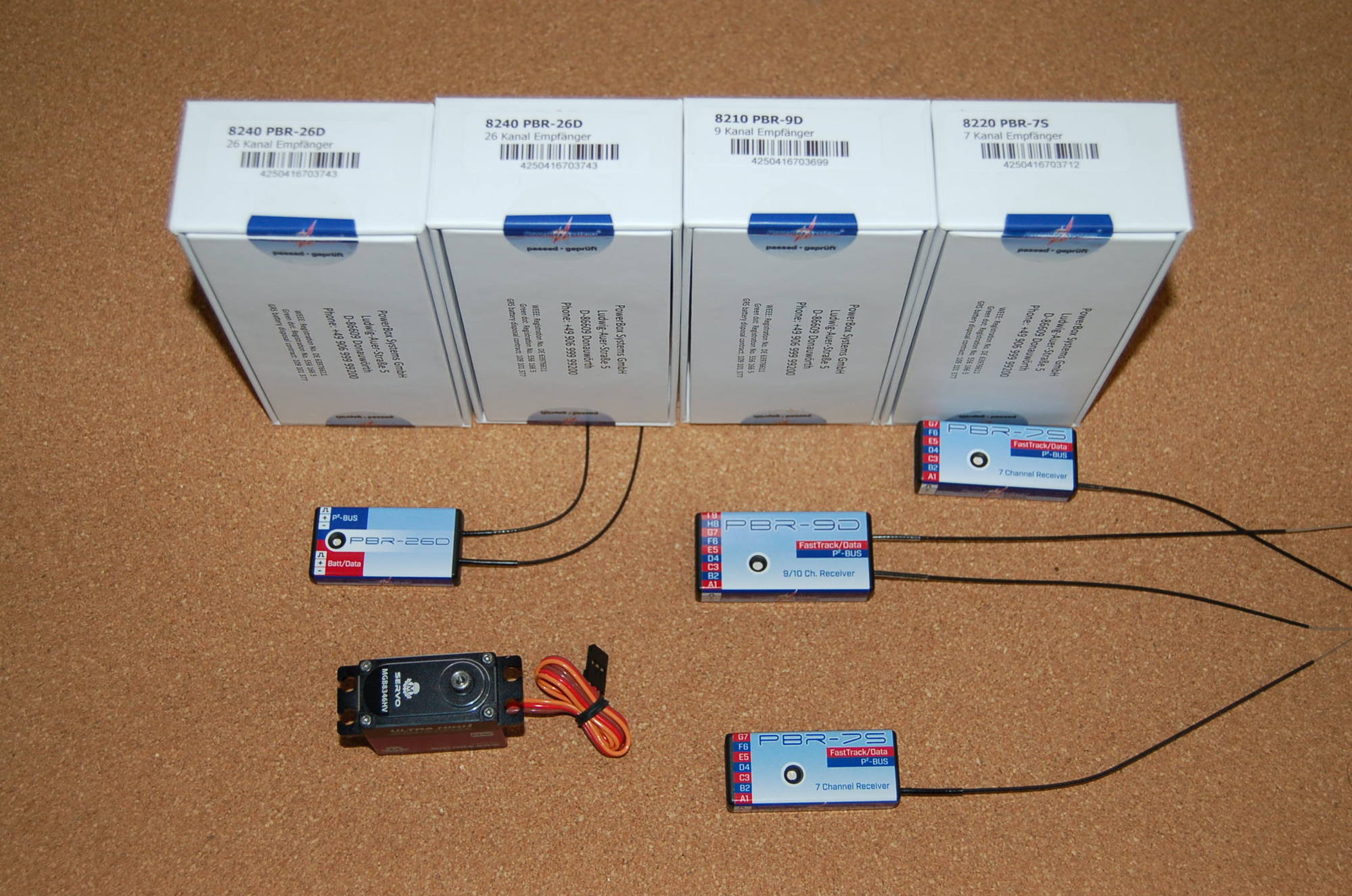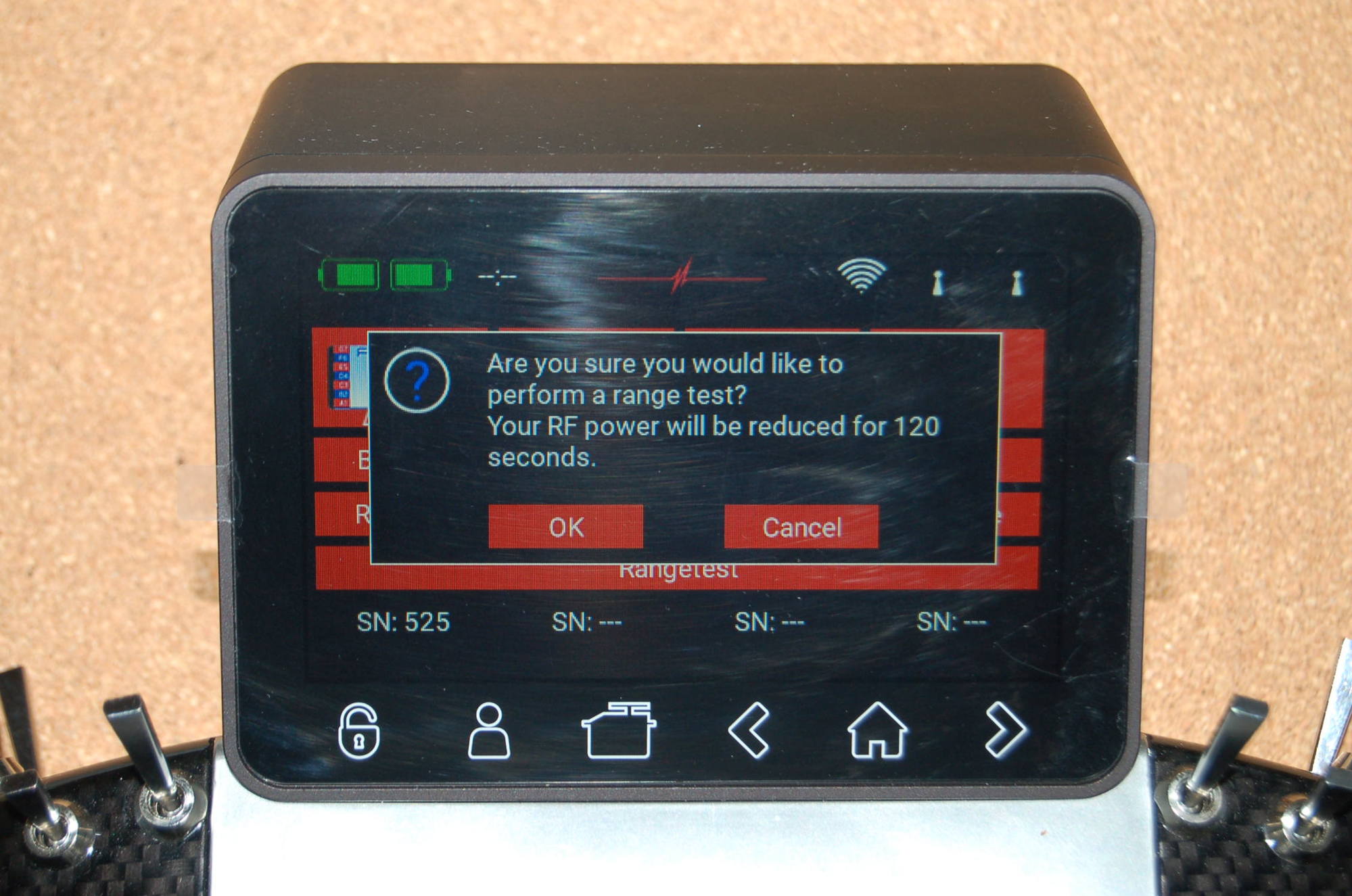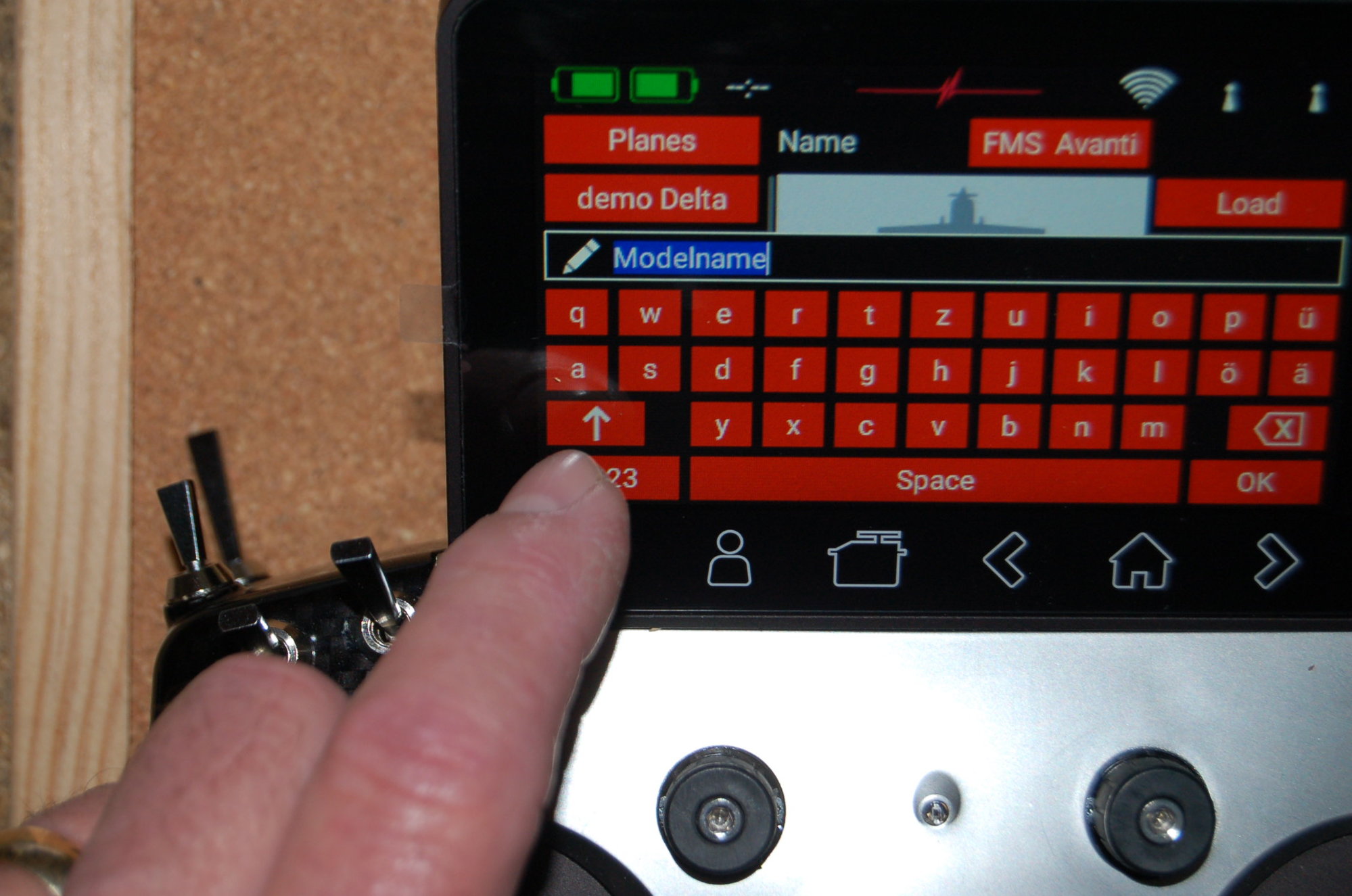Powerbox Core radio and set up thread.
#1

Thread Starter
The new Powerbox Core radio is getting closer to release. As one of the testers I have been flying the radio for over 5 months and reassuringly its been fault free.
I've done some fairly extreme testing in the way I have tested every JR Propo Tx I've used, we have a flying site where low and far far away flight is possible, we have power cables and a substation nearby, forest and contour change. I have also flown the Core at various airfields where we have steel in the runways from the war time heavies. Its been flown in light rain and heavy moisture conditions and throughout its been faultless. I will be recommending this to customers with 100's of thousands of dollars of 'toys' so its critical I can be comfortable with my recommendation.
The initial testing was with very early software allowing the basic functions necessary to fly models (expo etc) I was sent the latest software versions to update my own Tx (easy with the USB socket in the front) a couple of weeks back and will continue testing where I left off. I decided it was time to start explaining the programming process as its quite different to other radios and there are soooo many possibilities. Please note I have never been sent a manual (even the very first release) and asking whether I was going to get help I was told no-they needed to know whether the software was intuitive...it is!
Its Linux based system and boot up each time takes 25-30 secs. It's not fast, but you soon get used to the time and the graphic display gives you something to watch! To switch on it's a latched push button, so like a Digi or Gemini II Powerbox, press and hold the button until the red light comes on and release and immediately press again-the button goes green and the boot up starts. Off is the reverse, but the light flashes red while its powering down.
The touch screen is nice to use (I still have the protection on and it works with my sausage fingers!) You swipe down on the left hand side to access quick access and model select and use the keys along the lower screen to access/operate unlock, servo monitor, back home and forward.
First thing to understand is that you can arrange the Tx exactly as you want it, there are no pre assigned functions, you can name every channel as you wish with 16 digits using an international type qwertz keyboard layout, upper and lower case letters, numbers and some symbols
I've tried to photo steps to give people an idea of what it shows, there are so many sub sections I'm still learning and discovering things!
For us guys (Jets) its got a model type showing a jet in model type, select this and you get a list of really useful options. Glider and conventional FW powered aircraft. Selecting Jets you get a wing, tail, gear+brake, throttle + Smoke and Gyro + Vector option screen and you can then chose how many servos, functions etc you want to use in each section.
You also select which function you want controlled by which stick, switch, rotary, slider or button!
When you select ailerons and move your chosen aileron control to tell it the first aileron channel stick function (there are no modes as you effectively set that in this set up) it automatically selects the same stick for the second aileron. Same when you do elevator selection.
You can select the same control for more than one function if you wish.
Touching the + (for adding/selecting) will bring up a list of channels (listed servos) with the options 1-26 channels (depending on your Rx or PB unit). So as a JR Propo person I use ch1 for throttle, 2 ail, 3 elev etc as I'm used to. But you can use ch3 for throttle coming from Futaba.
You end up with a Control surface/item, control function driving it and channel used you will plug it into on each screen for the model type you are setting up.
More later when I can try again to post pictures!!!
I've done some fairly extreme testing in the way I have tested every JR Propo Tx I've used, we have a flying site where low and far far away flight is possible, we have power cables and a substation nearby, forest and contour change. I have also flown the Core at various airfields where we have steel in the runways from the war time heavies. Its been flown in light rain and heavy moisture conditions and throughout its been faultless. I will be recommending this to customers with 100's of thousands of dollars of 'toys' so its critical I can be comfortable with my recommendation.
The initial testing was with very early software allowing the basic functions necessary to fly models (expo etc) I was sent the latest software versions to update my own Tx (easy with the USB socket in the front) a couple of weeks back and will continue testing where I left off. I decided it was time to start explaining the programming process as its quite different to other radios and there are soooo many possibilities. Please note I have never been sent a manual (even the very first release) and asking whether I was going to get help I was told no-they needed to know whether the software was intuitive...it is!
Its Linux based system and boot up each time takes 25-30 secs. It's not fast, but you soon get used to the time and the graphic display gives you something to watch! To switch on it's a latched push button, so like a Digi or Gemini II Powerbox, press and hold the button until the red light comes on and release and immediately press again-the button goes green and the boot up starts. Off is the reverse, but the light flashes red while its powering down.
The touch screen is nice to use (I still have the protection on and it works with my sausage fingers!) You swipe down on the left hand side to access quick access and model select and use the keys along the lower screen to access/operate unlock, servo monitor, back home and forward.
First thing to understand is that you can arrange the Tx exactly as you want it, there are no pre assigned functions, you can name every channel as you wish with 16 digits using an international type qwertz keyboard layout, upper and lower case letters, numbers and some symbols
I've tried to photo steps to give people an idea of what it shows, there are so many sub sections I'm still learning and discovering things!
For us guys (Jets) its got a model type showing a jet in model type, select this and you get a list of really useful options. Glider and conventional FW powered aircraft. Selecting Jets you get a wing, tail, gear+brake, throttle + Smoke and Gyro + Vector option screen and you can then chose how many servos, functions etc you want to use in each section.
You also select which function you want controlled by which stick, switch, rotary, slider or button!
When you select ailerons and move your chosen aileron control to tell it the first aileron channel stick function (there are no modes as you effectively set that in this set up) it automatically selects the same stick for the second aileron. Same when you do elevator selection.
You can select the same control for more than one function if you wish.
Touching the + (for adding/selecting) will bring up a list of channels (listed servos) with the options 1-26 channels (depending on your Rx or PB unit). So as a JR Propo person I use ch1 for throttle, 2 ail, 3 elev etc as I'm used to. But you can use ch3 for throttle coming from Futaba.
You end up with a Control surface/item, control function driving it and channel used you will plug it into on each screen for the model type you are setting up.
More later when I can try again to post pictures!!!
The following users liked this post:
mcmakin50 (02-10-2020)
The following users liked this post:
mberme (09-28-2020)
#6
Hello Dave.I fly Jeti since a couple of years back and I am very satisfied with that brand. However, I like new gadgets and it´s not unlikely that I also get me a Core transmitter since I´m also very fond of the Powerbox line of devices on the airplane side, so to speak.But I´m a “tray flyer”. Powerbox has chosen a clever way of shifting the transmitter between tray mode and normal mode but does that also work out in real life? Is the tray version a well-functioning ergonomic solution that will satisfy the ordinary tray driver? Jannica in Sweden
#7

Thread Starter
Hello
I have not flown with the tray version yet (I have a customer ordered that version and I will for sure be using it) But I did try Richard's own Core tray at the JetCat 20th meeting last year and it felt balanced and comfortable. The customer I mention has a Jeti tray DC 16 and I fly with that, I think the smaller Core will be easier to operate functions on, the Core is also a thin Tx, so switch access is good.
Dave
I have not flown with the tray version yet (I have a customer ordered that version and I will for sure be using it) But I did try Richard's own Core tray at the JetCat 20th meeting last year and it felt balanced and comfortable. The customer I mention has a Jeti tray DC 16 and I fly with that, I think the smaller Core will be easier to operate functions on, the Core is also a thin Tx, so switch access is good.
Dave
#8

Thread Starter
The block in the centre is the friction adjust on the throttle stick, ratchet or not.
The back removes with inserted M3 cap heads. A friend who deals with high end electronics looked in this and noted the case fixing and he said- Wow! he liked the quality.

The back removes with inserted M3 cap heads. A friend who deals with high end electronics looked in this and noted the case fixing and he said- Wow! he liked the quality.

#10

Join Date: Nov 2004
Location: Skelleftea, Vasterbotten, SWEDEN
Posts: 40
Likes: 0
Received 0 Likes
on
0 Posts
Hello!
I'm not impressed by the strain relief on the lever cable. Are pretty sure they will go off pretty quickly if you do not smear the solder points with eg. contact glue, or arranging other strain relief. In any case, it doesn't look good in the picture.
/Ville
I'm not impressed by the strain relief on the lever cable. Are pretty sure they will go off pretty quickly if you do not smear the solder points with eg. contact glue, or arranging other strain relief. In any case, it doesn't look good in the picture.
/Ville

Last edited by ville56; 02-07-2019 at 05:49 AM.
#11

Thread Starter
There are no set modes, as described above you chose which stick does what so any 'mode' is possible. Mechanically you can swap the friction/ratchet and even have two friction for a skid steer vehicle.
Dave
Ville
This is one of the prototype Tx's, but I looked at the cables when I got it and there is adhesive under the cable and the heatshrink sections...you don't need globs of glue to do a good job. This is PB and not a chinese coax company ;-) All will be good
Last edited by Dave Wilshere; 02-07-2019 at 01:11 PM.
#12

Join Date: Nov 2004
Location: Skelleftea, Vasterbotten, SWEDEN
Posts: 40
Likes: 0
Received 0 Likes
on
0 Posts
George
...
Ville
This is one of the prototype Tx's, but I looked at the cables when I got it and there is adhesive under the cavle and the heatshrink sections...you don't need globs of glue to do a good job. This is PB and not a chinese coax company ;-) All will be good
...
Ville
This is one of the prototype Tx's, but I looked at the cables when I got it and there is adhesive under the cavle and the heatshrink sections...you don't need globs of glue to do a good job. This is PB and not a chinese coax company ;-) All will be good

#14

Thread Starter
You mean control response or Tx feel?
Watching servos react to the movement it’s super sharp, but until I fly it back to back in a composite airframe I cannot give you an honest answer. Now I have 26D rx’s I’m going to put it in my Joker on the Mercury, I’ve flown that model on the 28x for 5 months, so will know from the first flight. Gales due here this weekend, so not sure when I’m going to get a chance, but as soon as possible.
The Avanti EDF I did most of my flying on needed more Expo than the XG-8 set up I had.
Dave
Watching servos react to the movement it’s super sharp, but until I fly it back to back in a composite airframe I cannot give you an honest answer. Now I have 26D rx’s I’m going to put it in my Joker on the Mercury, I’ve flown that model on the 28x for 5 months, so will know from the first flight. Gales due here this weekend, so not sure when I’m going to get a chance, but as soon as possible.
The Avanti EDF I did most of my flying on needed more Expo than the XG-8 set up I had.
Dave
#16
I´m looking forward to your report of the 26D integration with the Mercury. That´s the setup I´m contemplating for my Turbinator. And thank you for your input about the tray version.
Jannica in Sweden
Jannica in Sweden
#17

Thread Starter
#18

My Feedback: (1)
I asked Powerbox Systems for a comnment on that at their Forum on their homepage and the Managing director Richard Deutsch answered this yesterday Feb 7:
"this radio is from Dave Wilshire - he got his one last year in June - it´s one of the prototypes. The series units are much better glued!"
/Bo
#19

Thread Starter
Yes, I said above its a pre production unit, there are detail changes made throughout the learning process. The cables on mine are doing fine though.
Brgs
Dave
Brgs
Dave
#22

My Feedback: (99)
I know your software isn't at full capacity but I am wondering if the following will be possible for my 120cc 3D planes:
Rates on a 3 position switch for low-mid-high and when the gyro is "on" the expo is a different value than when the gyro is "off" on all three rates? I like lower expo with the gyro "on"..... thank you
Rates on a 3 position switch for low-mid-high and when the gyro is "on" the expo is a different value than when the gyro is "off" on all three rates? I like lower expo with the gyro "on"..... thank you
#25

Thread Starter
Three rates are std, different expo with different gyro settings no problem.
Throttle cut I have never used, but I can already think of ways to easily achieve it. I think can say this Tx has endless possibilities because of the way it’s been designed. You are not tied in to the usual pre set programs, so everything is possible.
Throttle cut I have never used, but I can already think of ways to easily achieve it. I think can say this Tx has endless possibilities because of the way it’s been designed. You are not tied in to the usual pre set programs, so everything is possible.
















































